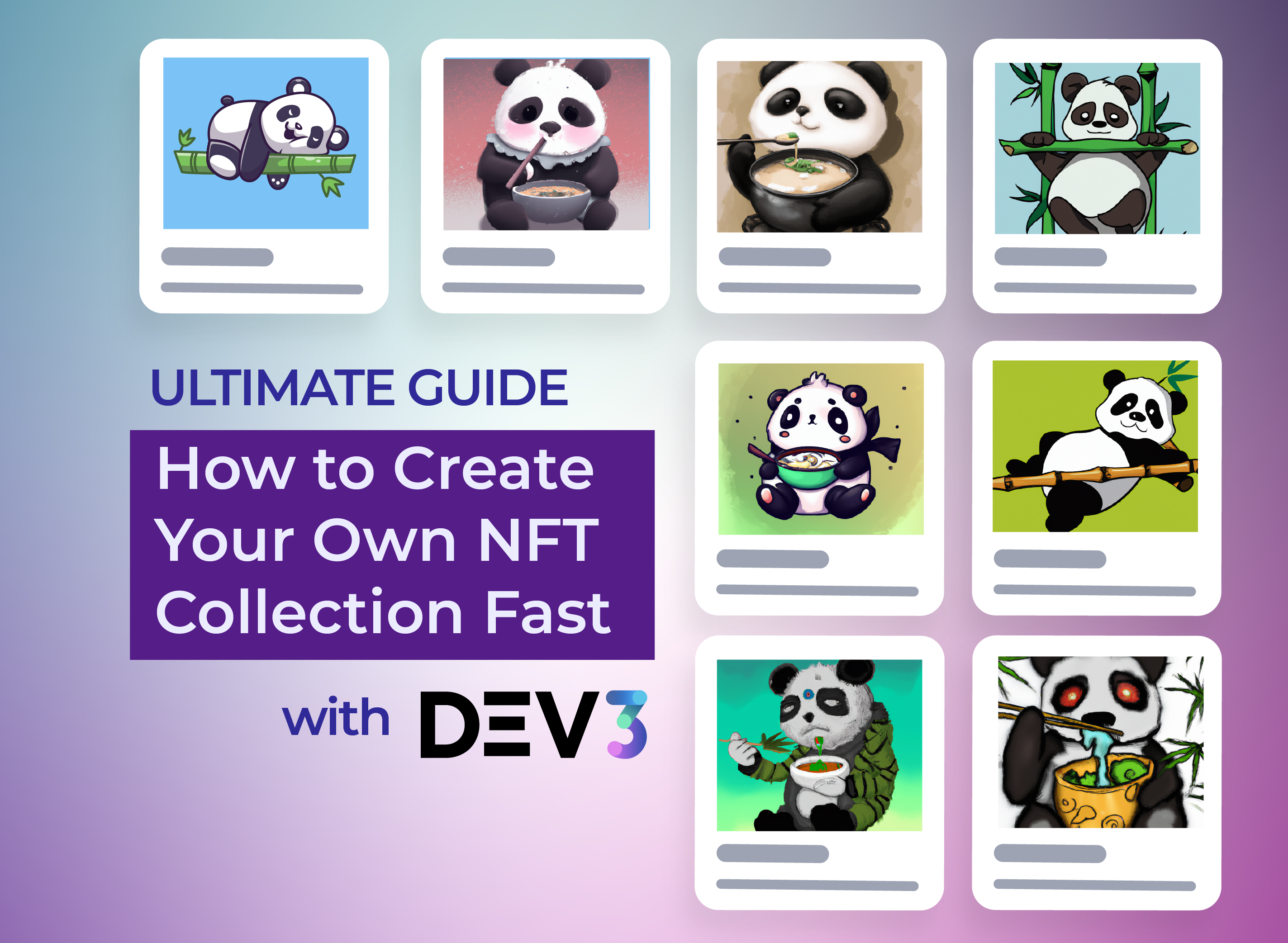Imagine inheriting a pearl necklace or simply receiving it as a gift. You’d probably like to know the value of that necklace, wouldn’t you?
We usually use a Google search for looking at the closest jeweler and find out how much the necklace is worth.
This story doesn’t end with the assessment itself. If it’s your grandmother’s wedding pearl necklace, its value is higher. No jeweler can estimate how much it’s worth to you because of its unique heirloom.
Necklaces without sentimental or unique value are interchangeable. The word ‘fungible’ in jargon means ‘generic, replaceable with something of identical characteristics.’
Your grandmother’s necklace isn’t replaceable. The family heritage is what makes it unique. Therefore, it’s non-fungible.
Based on this example, you can get an idea of what fungible and non-fungible things are. But, we want to discuss non-fungible tokens (NFTs), go a step further, and show you how to create an NFT collection with Dev3.
What Is an NFT?
Non-fungible tokens have a unique worth based on market variables such as rarity, intrinsic value, investment potential, and the importance of the associated assets, as opposed to fungible tokens, which all have the same value.
A non-fungible token represents ownership of something that can’t be copied or replicated. There can only ever be one true original, and it must belong to one true owner. In other words, it is unable to switch between different items.
NFTs are traded, and in some cases, they are bought and sold for serious money. The market or demand determines the price that NFTs can reach.
People usually ask, “Why would anyone buy an NFT if it’s just a simple photo that literally anyone can rip off and copy? Or a YouTube video that anyone can watch, a tweet that anyone can read, copy, and retweet?” The answer is in need to have something exclusive.
What Is an NFT Collection?
Collectibles are some of the most popular NFTs. These are usually small JPEG files created as part of a collection. An image file has minimal intrinsic value to anyone but collectors. Enthusiasts who wish to complete their collection pay hundreds and thousands of dollars for a simple NFT since each image is unique.
The majority of NFT collections often include a large number of tokens that have the same art style but differ somewhat from one another. An excellent illustration of this is the Bored Ape Yacht Club collection, one of the world’s most well-known and expensive NFT collections. This collection has 10,000 distinct NFTs showing monkey avatars with various features. They are stored on the Ethereum blockchain and are worth a lot. As of 2022, these NFTs have sold for more than US$1 billion.
Steps to Create NFT Collection
When we learned about single NFTs and NFT collections, it was time to create an NFT collection. Although you can choose images/audios/GIFs/etc. as NFTs, we will use the word ‘image’ as a guideline.
Some would think that creating an NFT collection is too complicated and give up before they even start. For this reason, Dev3 has come up with a solution that simplifies the entire process and where you’ll be able to reach your desired collection without a headache.
Create Dev3 Project and API Key
To use the Dev3 app, you have to start with a project. It’s super easy, and it’s for free. We led you through the entire three-step process here.
You can start your adventure when you finish creating the project and API key.
Create an NFT Collection
On the Dev3 interface, you will have a project you just created. When you enter the dashboard, it will show you the Workflow Items.
Choose ‘Contracts’ from Workflow Items and ‘Deploy,’ after which you’ll get different options to create smart contracts.
On the list that’s in front of you, there are two options between which you have to choose:
- ERC721 Mintable/Burnable
- ERC721 Basic Mintable
ERC721 is a token standard on Ethereum for NFTs.
Let’s say you want to create NFTs that can be mintable and burnable. Go for that option and press ‘Create ’. It’s similar to the process of creating ERC20 tokens we described here.
Here comes the fun part:
- Contact alias – it’s an alias you’ll use to access the contract through Dev3 SDK and API
- Token name – it’s a word you’ll name your NFT collection
- Token symbol – a symbol you’ll use to represent your NFT collection
- Base Token URI – the main thing that determines the NFT collection
The fourth part is a bit tricky. But don’t give up before you even start. We’ll lead you through the entire process and make it child’s play.
This step requires you to have a text editor installed on your computer. For this purpose, we used Visual Studio Code.
On the computer’s desktop, open a folder and insert digital files that will represent the NFT collection. Name each image in the order in which the collection will be presented on a blockchain from 0 onwards.
For example, if you want to create an NFT collection of 100 items, mark each image as 0.jpeg, 1.jpeg, to 99.jpeg. But for simplicity, let’s assume you’ll have two images.
You can name the folder ‘NFT collection.’
Open Visual Studio Code and insert the ‘NFT collection’ folder from the desktop. Open new files within that folder. Since your images are marked as 0.jpeg and 1.jpeg, your files will be 0 and 1.
Create two new folders within the main ‘NFT collection’ folder – ‘Images’ and ‘Metadata.’ You will insert photos in the ‘Images’ folder, and files in the ‘Metadata’ folder.
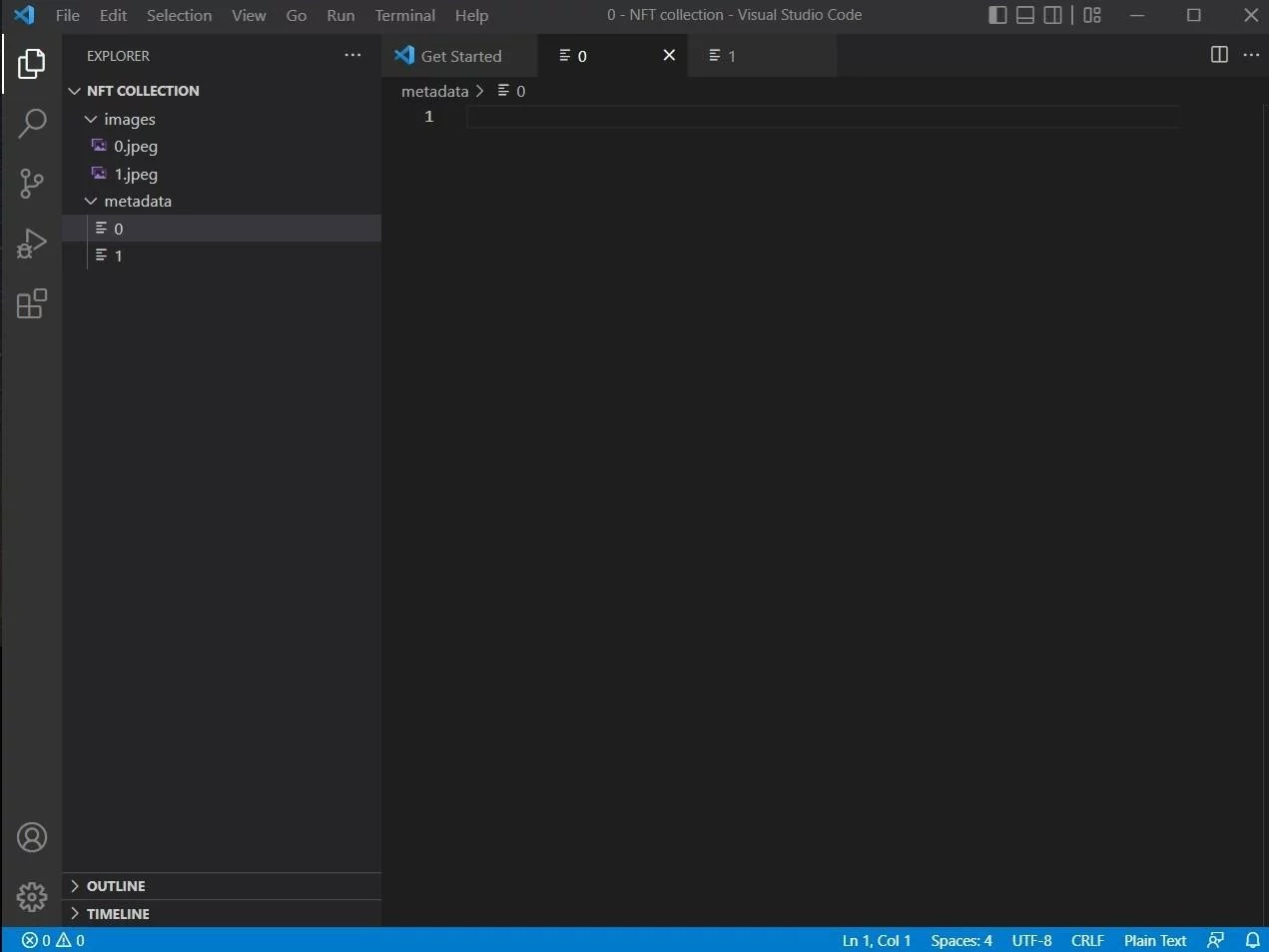
Each NFT has its metadata, and that’s what matters. The pictures come as an addition to the whole story. The goal is to create an NFT collection with images because when you come to a marketplace like OpenSea, you can import your NFT collection there, and the images you created as NFT will be displayed.
The main file to pay attention to is ‘Metadata,’ which contains files that describe a specific item from the collection. They are standardized and contain:
- Name – the name of the collection to which it belongs
- Description – general description of the NFT collection (name and description are the same for each item within one NFT collection, the only thing that changes is the image)
- Image – it contains a link. You have to go through one more easy step to get a link.
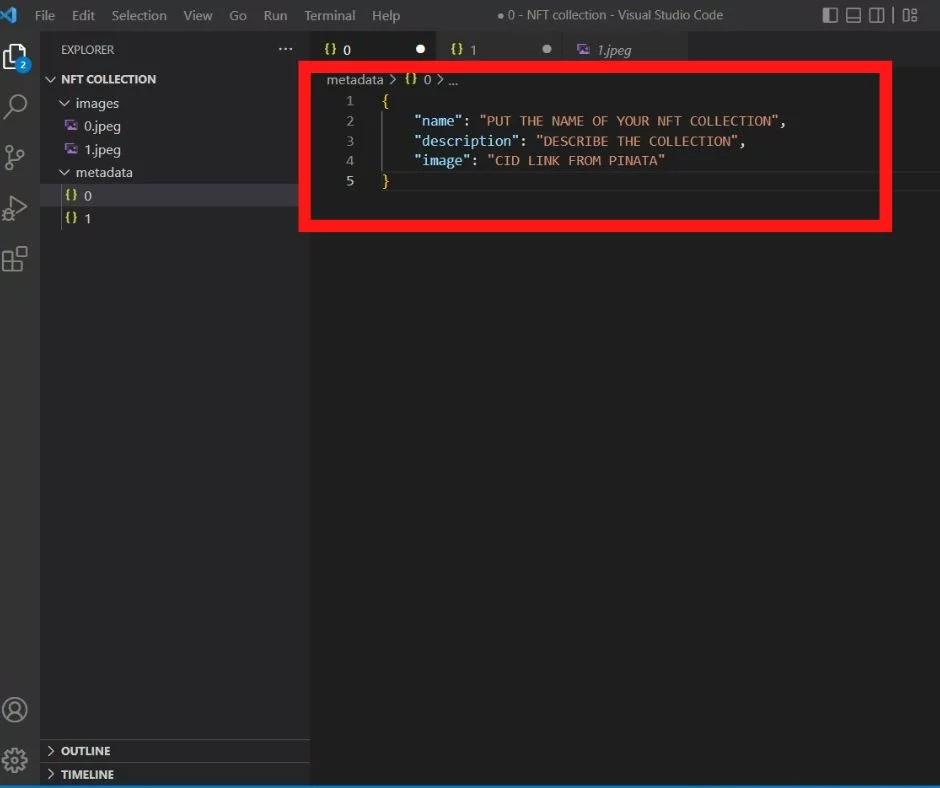
Pinata is a platform that enables interaction with IPFS, the standard storage used to store NFTs. We chose it because it’s secure and free to use.
Register on the platform and upload the folder with images from the desktop. You can name the folder whatever you want. When the folder is displayed in the dashboard, clicking on it will open a new window where you’ll be able to see files that have been uploaded and are ready for IPFS, the decentralized storage that everyone in the blockchain space loves.
Return to the editor to insert the images link you previously copied from the Pinata (CID link). This way, you’ll create a metadata file called 0 that connects the item on the blockchain with the actual image.
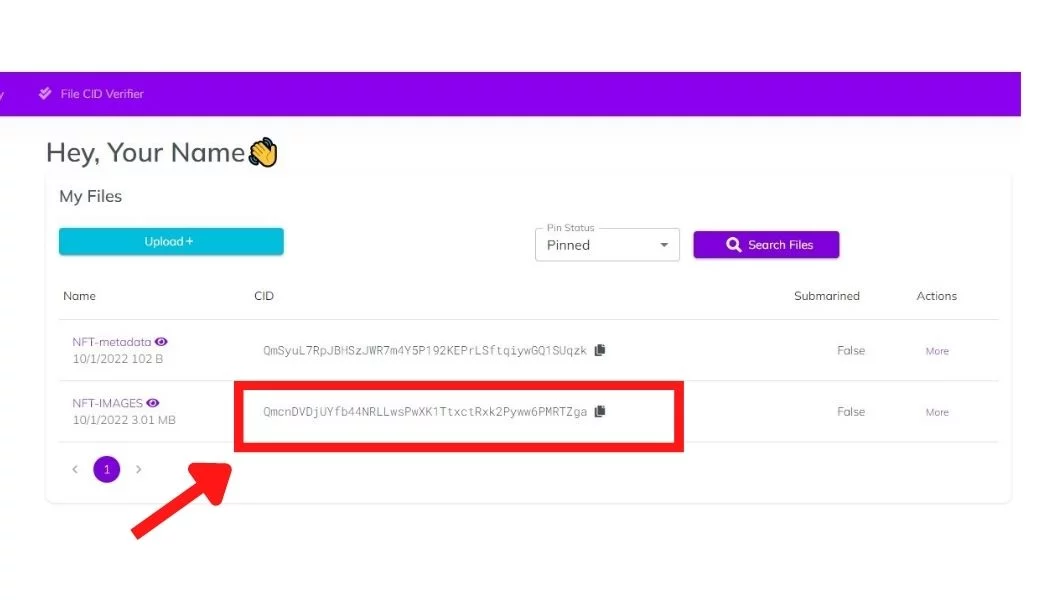
Now, it’s necessary to upload metadata folder to Pinata like you uploaded the previous folder with images.
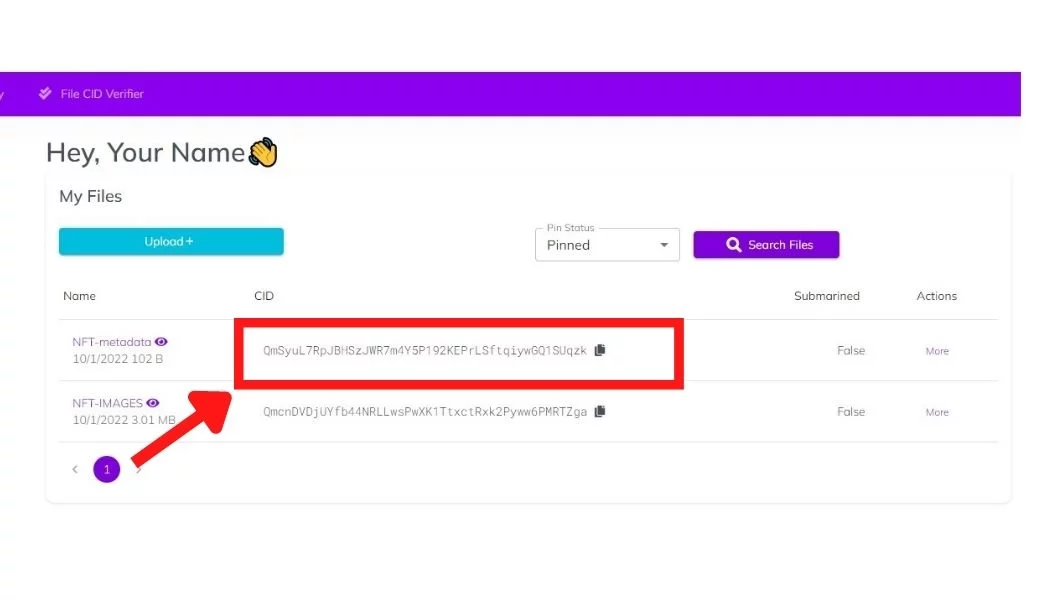
After the folder is uploaded, copy the CID link below the metadata folder and insert it into the ‘Base Token URI’ in the Dev3 app labeled ipfs://(link)/. After you press ‘Create contract deployment request,’ the request will appear within the ‘Request,’ and your NFT collection will be created after you deploy the collection.
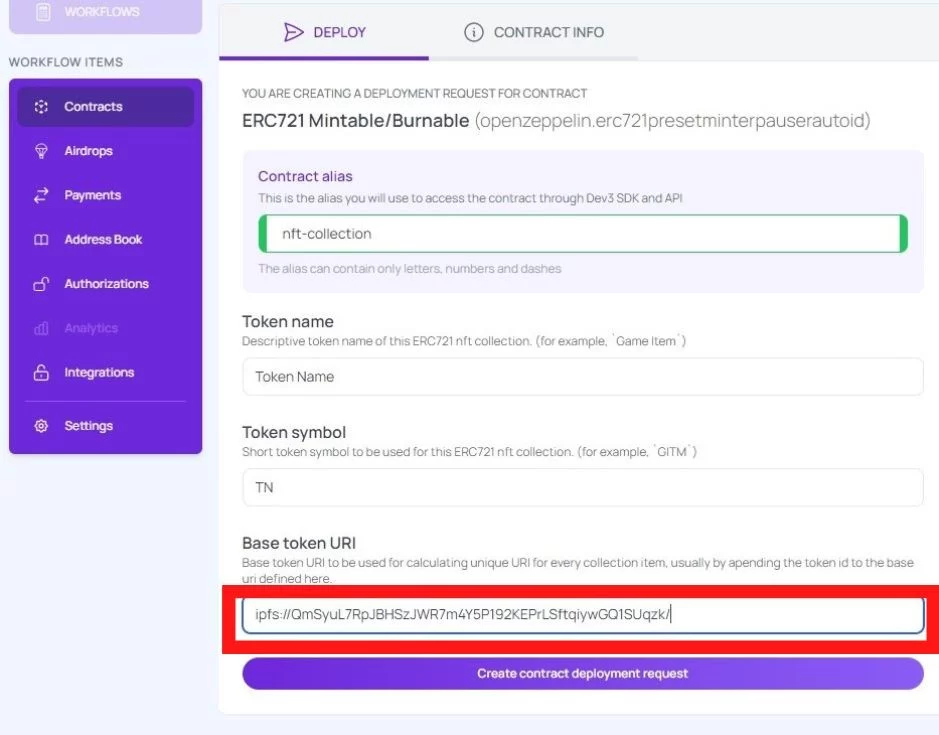
Now, the collection is created, but the items don’t yet exist on the blockchain. You just linked an ERC721 contract representing an NFT to an actual collection with a total of, e.g., two items. To create items, they need to be minted on the blockchain. How many items can you mint? Well, as many as the images you provided for the collection. How are they created? Within the ‘Mint’ function, select a wallet whose owner will also be the owner of an item.
With this step, you’re done!
Maybe all this looks like a lot, but it isn’t. The entire process is creative and a lot of fun.
Conclusion
Since NFTs are still a new and fragile technology, there will undoubtedly be significant and turbulent developments in the future. Yet, it can’t be undone or forgotten. We can be confident that NFTs won’t disappear because they gained such a substantial amount of acceptance in such a short period.
Non-fungible tokens will carry on with development and growth, eventually affecting people’s daily lives. NFTs can simplify the usage of many services and increase transaction transparency, particularly in art, real estate, etc.
In the following years, this field will likely continue to improve at a rate that will drastically alter everyday life for an ordinary human.
